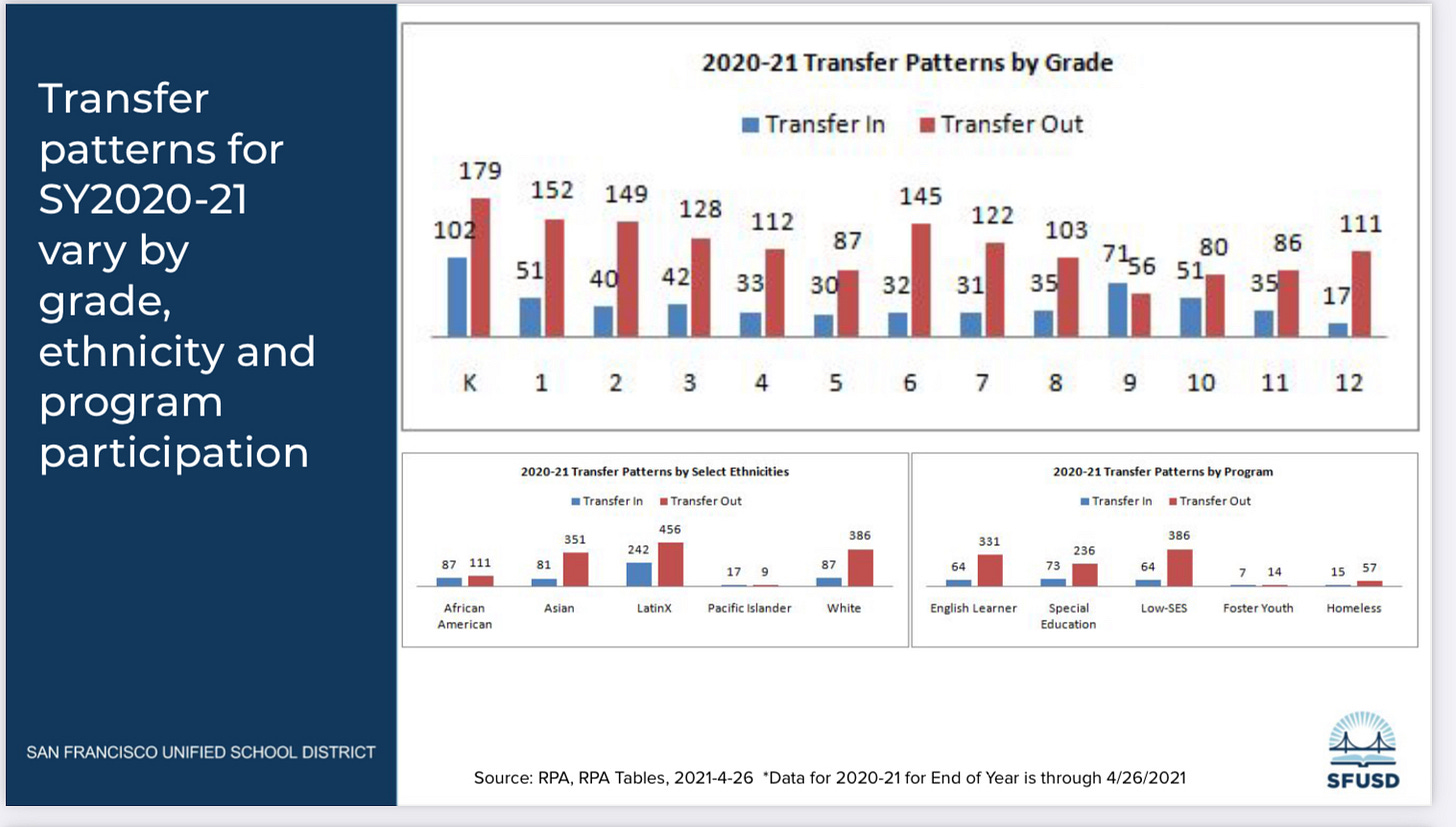Enrollment is dropping faster
Huh! Let’s study it later
Commentary
First of several posts looking at the upcoming school year.
How many students will be in my child’s grade next month? It’s not the usual back to school question, but one especially relevant this coming school year. San Francisco Unified School District (SFUSD) data presented in June had a total enrollment across all grades of 50,955 at the end of the school year, 3.2% less than the total from a prior year. Applications for Kindergarten were down 10%, compared to virtually no change in the year prior. But it’s not just class size and teacher allocation, it’s money for the cash-strapped school district for 2022-2023.
Figure 1: End of year enrollment for the SFUSD shows a 3.2% drop to 50,955 students for 2020-2021. Source: Presentation to Budget and Business Services Committee, June 2, 2021.
More than half of the delta is also reflected in the fall 2020-21 data, where the 51,756 students reflected a decline of 1,022 compared to the prior period. That 2% diminishment is roughly in line for data from across the state for the same period. End of year data are not available for California as a whole. What also is unknown is if there will be a further change in enrollment from families moving in or out of the school district after the release of the June data.
Actions and events within and outside the district could have driven families to move their children into independent schools or into or out of the City. School start time changes after school assignments were made in the spring made many parents express their displeasure at Board of Education meetings starting May 25 (3 hour mark). Despite the commitment to reopen schools fully in the fall, there was a lack of clarity of a number of items related to fall school details: union contract, ventilation, mask policy, before and after care, public transportation schedule. Immigration policies, job prospects, new work from home prospects, and tenant eviction rules were noted by Commissioner Jenny Lam (46 minute mark) and others as affecting many district families.
Data and what to do about data
It is true that clearer numbers will be out in late August and sometime in October. But this snapshot from June, obtained by document request, has a lot of data behind the slides. Initial analysis shows the transfer out rate has increased for Asians, LatinX, and White ethnicities, for English Learner, Special Education, and Low Socioeconomic status (SES) programs. Further breakdowns are available by school and by zip codes, as examples.
Figure 2: Transfer out patterns for certain ethnicities and programs were significant this past school year. Source: Presentation to Budget and Business Services Committee, June 2, 2021.
Can the SFUSD continue to operate as before the pandemic? Superintendent Vincent Matthews advises to wait to get more numbers in the fall. District staff are seeking a research group to perhaps make another 100 page plus study about future enrollment trends. Do note that the current research firm estimated in January 2020 that the 2020-2021 enrollment would go up to 57,963 (medium forecast), including using modeling of lower than expected new housing construction and lower than expected number of students per household. Yeah, about that increase.
The information is out there to be gathered. And it’s not just demographic trends and eviction policies. It’s school performance and school district actions. It’s other schools offering scholarships to increase their diversity numbers. For the Edwin and Anita Lee Newcomer School, parent Josephine Zhao notes about the drop in enrollment, “The viability of this newcomer school is crucial for the health of our community. Immigrant children need a starting placement in EALNS in order to transition fully into our education system. The past adminstration’s immigration policy was a major factor. The SFBOE board policies on school reopening and targeting Asian community are another factor for the enrollment decreases.”
This Board of Education can action the District to get quicker, less comprehensive answers. They can work to understand and develop policies to stem the transfers out. Such policies like helping the Kindergarten classes, the English learners, the Special Education, and low SES programs will also very likely help the students who choose to remain.


